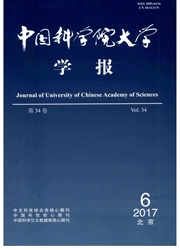

 中文摘要:
中文摘要:
本研究将辐射后的hprt^-AL细胞与未辐射的hprt^+AL细胞共培养,通过加有次黄嘌呤氨甲基喋呤胸腺嘧啶(HAT)的培养基选择性杀死被辐射的hprt^-AL细胞,探讨了损伤信号在辐射与未辐射细胞间的传导及其机理.研究发现受辐射的hprt^-AL细胞能将损伤信号传导给未辐射的hprt^-AL细胞,导致其CD59基因位点突变率显著性增加.通过观察DMSO和Lindane对α粒子照射诱发的细胞旁效应的抑制作用发现,在受辐射的共培养实验组中,Lindane能显著提高未辐射细胞的存活率,降低其突变率;DMSO仅能提高其存活率,但对其突变无明显影响,显示细胞间通讯在α粒子照射诱发细胞存活及基因突变旁效应中起重要作用.
 英文摘要:
英文摘要:
To investigate signal transduction between irradiated cells and unirradiated cells and its potential mechanism, unirradiated hprt^+ AL cells were co-cultured with irradiated hprt^- AL cells which were then killed by HAT selected medium. Results show that irradiated hprt- AL cells could transmit damage signals to unirradiated hprt^ + AL cells and increase the mutation fraction at the CD59 locus. Free radical scavenger DMSO and intercellular communication inhibitor Lindane significantly increase the survival of unirradiated cells while only Lindane treatment is able to suppress the CD59 mutagenicity in unirradiated cells. These results indicate that GJIC plays an important role in the process of RIBE.
 同期刊论文项目
同期刊论文项目
 同项目期刊论文
同项目期刊论文
 Elevated sodium chloride concentration enhances bystander effects by increasing the sensitivity of b
Elevated sodium chloride concentration enhances bystander effects by increasing the sensitivity of b The Early and Initiation Process of Radiation-Induced Bystander Effects Involving in the Induction o
The Early and Initiation Process of Radiation-Induced Bystander Effects Involving in the Induction o Enhanced Radiation Damage in Irradiated and Non-irradiated Bystander Cells by Co-exposure with Myosm
Enhanced Radiation Damage in Irradiated and Non-irradiated Bystander Cells by Co-exposure with Myosm Cadmium induced germline apoptosis in Caenorhabditis elegans: the roles of HUS1, p53 and MAPK signal
Cadmium induced germline apoptosis in Caenorhabditis elegans: the roles of HUS1, p53 and MAPK signal Mitochondria-depended Signaling Pathway Involving in the Early Process of Radiation Induced Bystande
Mitochondria-depended Signaling Pathway Involving in the Early Process of Radiation Induced Bystande Arsenite-induced germ cell apoptosis through a MAPKs-dependent, p53- independent pathway in Caenorha
Arsenite-induced germ cell apoptosis through a MAPKs-dependent, p53- independent pathway in Caenorha 期刊信息
期刊信息
